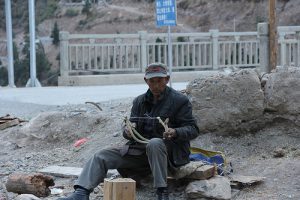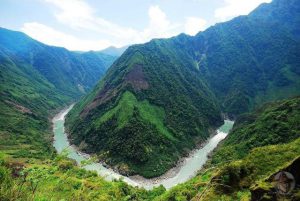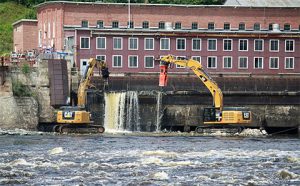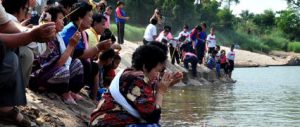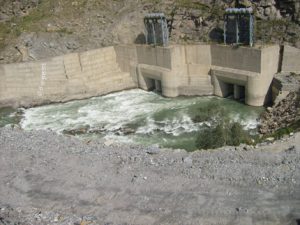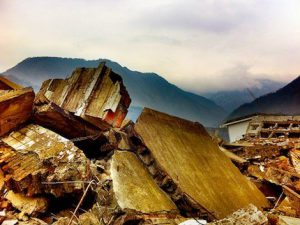Green Lens 2: Travelling along the rivers
By Wang Yongchen
SDX Joint Publishing Company, 2013
Formerly a reporter for China National Radio, and founder of the Green Earth Volunteers, Wang Yongchen has spent the past eight years travelling along China’s rivers, tracking the changes to the waterways and the people living alongside them. The trip – part of Wang’s River Decade Project launched in 2006 – started in Dujiangyan and followed the Dadu River through western Sichuan. She then went south through the Yalong River’s Jinping Gorge and onto the Jinsha, Lancang and Nu rivers in Yunnan.
The resulting book, Green Lens 2, is based on the photos and stories gathered during these journeys. It records how environmental changes have altered the lives of those living along the rivers and draws on experiences of river development in other countries.
Dams are the main focus of the book. Over the past decade China has seen explosive growth in this sector, with 80,000 dams now built or being built. Even the cascade of dams on the Nu River – halted three times by then Prime Minister Wen Jiabao and fiercely opposed by both officials and NGOs – was included in energy plans for the 12th Five Year Plan.
Lack of overall planning or river protection laws, along with failings in the approvals process for hydropower projects, has resulted in a hydropower craze sweeping through the valleys of China’s southwest. As Wang points out, construction of the dams at Tiger Leaping Gorge, Renzonghai and Xiaonanhai started before official approval had been given, causing irreparable environmental damage.
On the Nu River the author was trapped by mudslides caused by dam construction and damage to vegetation. Mudslides and landslips are common on developed rivers.
It is the people living alongside the river who have suffered the most, yet they have also been noticed the least. Wang’s project identified 10 families to visit every year to see how their lives were changing.
The book describes the fate of Zhu Liuchang and his family. In 2006 their farm was doing well and they had three years’ worth of grain stored up. But by 2008 their cupboards were almost bare. Back in 2006 the local government said a dam would be built – but even in 2008 Zhu did not know when they would be resettled, and so he was reluctant to plant too much grain or raise much livestock. The government also cut down the village fruit trees. These enormous trees provided thousands of yuan worth of fruit every year – yet the villagers only received fifty yuan [US$8] of compensation. And they were charged 50,000 yuan [US$8,250] to move into their new home.
The author’s concern for these people enlivens her writing. At the press conference for the release of a new NGO report on the state of China’s rivers, Wang spoke of a visit to a mountain village in western China: “The hydropower developers forced the villagers to move into the mountains – not because their village was going to be flooded, but because the village was in a good location and they wanted to build their base there. Five hundred year old walnut trees were cut down and the villagers forced to leave the land that had been their home for generations.”
Wang’s travels have provided her with a wealth of photographs and first hand stories. As she said at one meeting, “not many people know the truth”.


